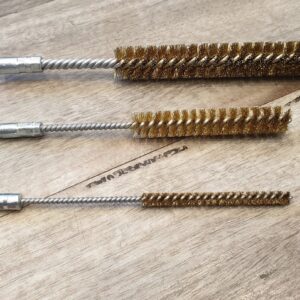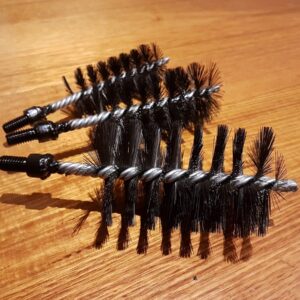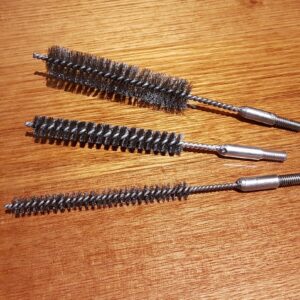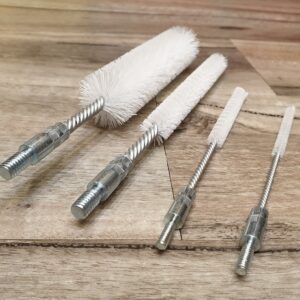How to Braze a Steel Ferrule Tube Brush to a Steel Rod

Brazing is an essential technique for joining metal components, especially when working with tube and wire brushes in industrial and engineering applications. If you need to fit a brass condenser tube brush with a steel 5/16″ ferrule and a galvanised steel twist stem wire to a steel rod, brazing provides a strong and durable connection. In this guide, we’ll walk you through the process step by step, ensuring a professional and long-lasting result.
Why Choose Brazing Over Welding?
Brazing is ideal for this type of joint because it works at lower temperatures than welding, reducing the risk of warping or damaging the materials. Additionally, brazing allows for capillary action, ensuring that the filler metal flows evenly into the joint, creating a solid bond without melting the base metals.
Step-by-Step Brazing Process
1. Surface Preparation
Proper surface preparation is crucial for a strong brazed joint. Follow these steps:
- Use a wire brush to clean the steel ferrule and steel rod, removing dirt, rust, and oxidation.
- Lightly abrade the surfaces with wet and dry sandpaper (400-600 grit) or a Scotch-Brite pad to create a better bonding surface.
- Degrease both parts with acetone or an appropriate solvent.
- Apply brazing flux to both surfaces to prevent oxidation and improve the flow of the filler metal.
2. Positioning the Parts
- If possible, insert the steel rod into the ferrule to create a mechanical connection before brazing.
- Secure the assembly with clamps or a fixture to keep it steady during the process.
3. Heating the Joint
- Use an oxy-acetylene torch or a MAPP gas torch for heating.
- Focus more heat on the steel rod since it has a higher mass and takes longer to reach brazing temperature.
- Avoid excessive heat on the galvanised twist stem wire to prevent the release of hazardous zinc fumes.
4. Applying the Brazing Rod
- Once the steel reaches 800-900°C, apply the silver brazing rod to the joint.
- Capillary action will draw the molten filler metal into the joint, creating a strong bond.
- Ensure complete coverage around the ferrule and rod.
5. Cooling and Cleaning
- Allow the joint to cool naturally—do not quench, as rapid cooling can weaken the bond.
- Remove any remaining flux with warm water and a wire brush.
- Inspect the joint to ensure full penetration and strength.
Need Assistance? Seek Professional Help
If you’re unsure about any step of the process or require a precise, durable bond, it’s always best to consult a qualified welding professional or a boilermaker experienced in brazing. They can ensure the correct materials, temperatures, and techniques are used for a high-quality connection.
Why Choose Busy Bee Brushware?
At Busy Bee Brushware, we source high-quality tube and wire brushes from reputable suppliers to ensure durability and performance. Whether you need brushes for industrial or engineering applications, we have a wide range available to suit your needs. Contact us today to find the right brush for your job.





